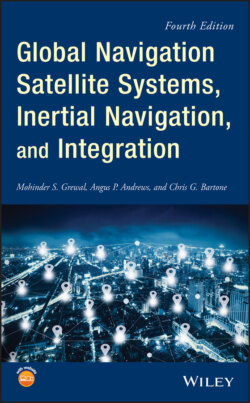Читать книгу Global Navigation Satellite Systems, Inertial Navigation, and Integration - Mohinder S. Grewal - Страница 139
ISA Attitude Control
ОглавлениеGimbals control ISA orientation. This is a three‐degree‐of‐freedom problem, and the solution is unique for three gimbals. That is, there are three attitude‐control loops with (at least) three sensors (the gyroscopes) and three torquers. Each control loop can use a PID controller, with the commanded torque distributed to the three torquers according to the direction of the torquer/gimbal axis with respect to the gyro input axis, somewhat as illustrated in Figure 3.20, where
Disturbances includes the sum of all torque disturbances on the individual gimbals and the ISA, including those due to ISA mass unbalance and acceleration, rotations of the host vehicle, air currents, torque motor errors, etc.
Gimbal dynamics is actually quite a bit more complicated than the rigid‐body torque equation
which is the torque analog of , where is the moment of inertia matrix. The IMU is not a rigid body, and the gimbal torque motors apply torques between the gimbal elements (i.e. ISA, gimbal rings, and host vehicle).
Desired rates refers to the rates required to keep the ISA aligned to a moving coordinate frame (e.g. locally level).
Resolve to gimbals is where the required torques are apportioned among the individual torquer motors on the gimbal axes.
The actual control loop is more complicated than that shown in the figure, but it does illustrate in general terms how the sensors and actuators are used.
For systems using four gimbals to avoid gimbal lock, the added gimbal adds another degree of freedom to be controlled. In this case, the control law usually adds a fourth constraint (e.g. maximize the minimum angle between gimbal axes) to avoid gimbal lock.
